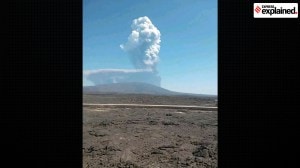Market story intact: ICICI, SBI, Kotak AMCs
Despite the recent turbulence in the markets beginning July and investors remaining cautious over their investments, fund houses remain optimistic.

Despite the recent turbulence in the markets beginning July and investors remaining cautious over their investments, fund houses remain optimistic. Their verdict: while markets may remain volatile in the next two to three months, it’s nothing to worry about. Much will, however, depend on whether the US Fed cuts interest rates.
The volatility in the Indian market over the last one month has arisen because of losses incurred by hedge funds in their subprime portfolios. Lured by the high returns (Libor plus 100 bps), many hedge funds had large holdings of collateralised debt obligations (CDOs, which are derivative instruments backed by mortgages). Some took loans from banks to invest in CDOs.
When defaults of subprime loans began to rise, the value of these CDOs began to fall. Banks, which had lent to hedge funds with the CDOs as collateral, then began demanding more margin money from these funds. To pay this margin money, hedge funds had no other option than to sell their most liquid investments. And since the most liquid investment was equities, including in emerging markets, when hedge funds sold them, emerging markets, including India, fell.
Is the subprime crisis behind us? The total subprime issuance is roughly $1,200 billion. Estimates of subprime non performing assets (NPAs) ranges between 14 and 28 per cent, or $168-336 billion. About 30 per cent of the loans will have to be written off, which amounts to a loss of $50-100 billion. Some hedge funds have already paid the price — two hedge funds belonging to Bear Stearns have lost $1 billion each.
Now all eyes are on the US Federal Reserve (known as Fed or the central bank of the US). If the Fed cuts rates, CDOs will begin to trade again at values close to their purchase price. And the losses of hedge funds will get stemmed.
But if it doesn’t, “we may suffer and the market may see a correction of 15-20 per cent, but we will not die,” said Nilesh Shah, deputy managing director and CIO, ICICI Prudential AMC. “But their house will be burnt to ashes as 40 per cent of the American market capitalisation is built on banking and financial services.”
What is the basis of assuming that the Fed will cut rates? “Its past track record,” said Shah adding, they did it in 1997 to bail out Asian countries, in 1998 to help the Russian government, and in 2001, they cut interest rates and pumped liquidity to tide over the 9/11 crisis.
Other than this factors like ample liquidity in the world will keep the market going. “Investors have already taken advantage of the yen carry trade,” said Sanjay Sinha, CIO, SBI Mutual Fund. “Other geographies are also flush with funds like the GCC countries which have a surplus of $1.5 trillion on account of the recent spurt in the price of crude, which may go up to $5 trillion in 2007.” All this, he reasoned, has to be deployed somewhere and “Since China and India and other south east Asian economies are high on growth, liquidity will move from the western to the eastern hemisphere.”
Currently there is a huge liquidity overhang in emerging markets and lot of money comes to India because of the interest rate differential. This ample liquidity has led to rupee appreciation which has emerged as a concern for Reserve Bank of India. “In the 1990s, global investors demanded higher premium for investing in emerging markets on account of risk of devaluation,” said Sandesh Kirkire, CEO, Kotak AMC. “That has come down significantly and they are more confident now investing in emerging markets. Many emerging markets are growing at double the pace of US economy.”



- 01
- 02
- 03
- 04
- 05




























